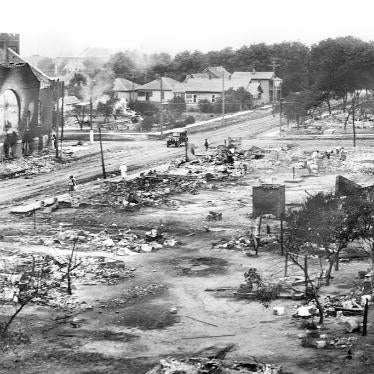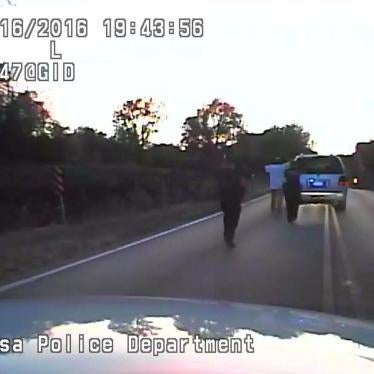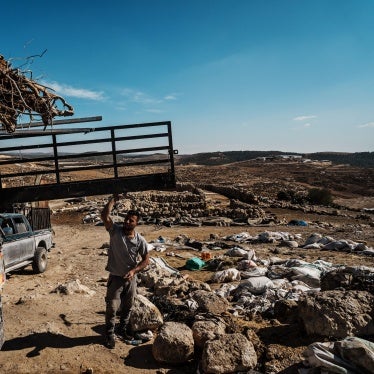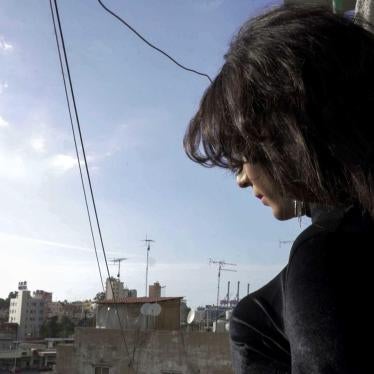VIA CERTIFIED MAIL and EMAIL (Shaylyn.Cochran@usdoj.gov)
Kristen Clarke, Esq.
Assistant Attorney General for Civil Rights
United States Department of Justice
Civil Rights Division
950 Pennsylvania Avenue, N.W.
Office of the Assistant Attorney General, Main
Washington, D.C. 20530
RE: Tulsa Race Massacre Mass Graves Investigation Request
Dear Ms. Clarke,
The Justice for Greenwood Foundation, along with the undersigned only three (3) living survivors of the 1921 Tulsa Race Massacre, Massacre victim descendants, elected officials representing Black Tulsa, civil rights attorneys, national advocacy groups, historians, and community activists, write to you today to formally request that the United States Department of Justice (“DOJ”) open an investigation under the Emmett Till Unsolved Civil Rights Crime Act of 2007[1], together with its 2016 Reauthorization, to investigate the Massacre that destroyed all of Black Tulsa over a century ago and bring justice to the survivors of the Massacre and their descendants.
Black Wall Street
By the Spring of 1921, Black Tulsans had built a vibrant, peaceful, and extraordinarily prosperous community in a segregated part of town known as Greenwood. Also known as “Black Wall Street,” Greenwood provided a much different environment than those in which most Black Americans lived—one that offered a unique degree of independence, self-sufficiency, and prosperity for Black people. Greenwood had:
two black schools . . ., one black hospital, and two black newspapers . . . . [Greenwood] at this time had some thirteen churches and three fraternal lodges . . . plus two black theaters and a black public library . . . . Along Detroit Avenue and certain other streets were the neat, sturdy homes of some of those black Tulsans who owned business lining Greenwood Avenue, augmented by the houses of the city’s black professional class.[2]
This booming community attracted many Black families “lured by the dream of making money and bettering [themselves] in the financial world,”[3] and its population had grown to nearly 11,000 people, none of whom ever could have imagined that everything they had built could be destroyed in less than 24 hours. However, that all changed on May 31, 1921.
The 1921 Tulsa Race Massacre
In the afternoon of May 31, 1921, a newspaper called the Tulsa Tribune published an article falsely accusing a young, 19-year-old Black man named Dick Rowland of sexually assaulting a young white woman in an elevator. Rowland was arrested and taken to jail, where a large group of angry white men congregated, hoping to break Rowland out and lynch him in retaliation for the misgivings of which he had been falsely accused. Upon learning of these plans, a group of Black men made their way to the jail to protect Rowland from the angry white mob. Tensions were high.
While the two groups of Black and white Tulsans grew, a gunshot rang out, and a massacre ensued. The group of white Tulsans who had gathered at the jail summoned their family members, neighbors, and friends, and approximately 2,000 white men, including local government officials and police officers, pillaged and destroyed the entire Greenwood neighborhood in a brutal attack that lasted from the evening hours of May 31st into the early morning hours of June 1st. Renowned journalist A.J. Smitherman, a Massacre survivor, wrote of the horrors he observed that night:
"Kill them, burn them, set the pace.
Let them know that we are white men,
Teach them how to keep their place.[“] [. . . .]
Guns were taken by the hundreds,
Ammunition all in sight
Reign of murder, theft and plunder
Was the order of the night.[4]
By sunrise on June 1, 1921, the once prosperous 36-block business district in North Tulsa lay utterly destroyed. Scores of successful businesses were lost. Estimates of the total property damage have amounted to around $200 million dollars in today’s currency. [5] Worse, hundreds died and thousands more were injured. Still, more were left homeless—many were forced to flee their hometown and never look back. Some were simply never heard from again. And those who managed to avoid physical injury were still left destitute and forever traumatized by the horror of witnessing their families, friends, and neighbors be brutally slain before their eyes.
Though the death toll is estimated to amount to hundreds, only 37 death certificates were issued in connection with the Massacre, leaving many survivors (and their descendants) without answers to their questions about what happened to their loved ones, where they were, and at whose hands they met their tragic fates. While witnesses at the time reported seeing numerous Black bodies piled into trucks and thrown into the river or into mass graves throughout the city, these bodies were never identified, the decedents’ families were never notified, and their deaths were never properly investigated. No charges were ever brought, and no insurance claims were paid.
The Search for Mass Graves Connected to the Massacre
In anticipation of the Massacre’s centennial anniversary, the City of Tulsa announced a campaign to search for the mass graves witnesses had reported seeing Black bodies being thrown into after the Massacre and, if such graves were found, to identify the remains, investigate the victims’ deaths, and find answers to questions that remain unanswered more than a century later.
So far, over thirty (30) coffins have been found and twenty (20) remains exhumed from unmarked graves in the City-owned Oaklawn Cemetery location near downtown Tulsa where witnesses reported seeing mass graves following the Massacre. Earlier this summer, it was reported that at least one set of skeletal remains belonging to a Black male had been uncovered from the mass grave, and that the remains were riddled with bullet wounds. Though the body has not been identified and the circumstances of the death have not been confirmed, the location in which it was found, the condition of the remains, and the trauma apparent from the bones corroborate witnesses’ statements about the existence and likely location of mass graves connected to the Massacre.
Lack of Trust in Local Government Officials’ Investigation
Ever since the City began its search for mass graves connected to the Massacre, the three (3) living Massacre survivors have been concerned about trusting the City of Tulsa and other political subdivisions of the State of Oklahoma to handle the remains of their deceased neighbors and ancestors with care and compassion and to properly, and meaningfully, investigate their deaths. They also worry that exhuming the remains of people whose bodies have lain at rest for a century without taking the proper steps to preserve and respect the remains, identify them, and seek justice on their behalf, will only cause additional trauma to a community that has already seen far too much of it. Perhaps most bothersome about this coordinated effort is that many of the predecessors of some of the officials who are involved in the search and investigation both encouraged and actively participated in the violence that destroyed Greenwood in 1921 in the first place. Since these various political subdivisions still bear some liability for their officials’ roles in perpetuating such violence, naturally, those who survived it and their descendants are skeptical about these state and local government officials’ and entities ability and willingness to conduct an objective and thorough investigation, and about whether they can handle the effort compassionately, keeping in mind the traumatic effects a botched investigation would likely have on the Greenwood community’s heirs. Though the Massacre survivors and their descendants are indeed still desperate for answers one hundred years later, the flagrant conflict of interest plaguing the current mass graves operation calls into question the operation’s integrity and the public’s trust in its findings.
Ms. Lessie Benningfield Randle ( “Mother Randle”), age 106, and Ms. Viola Ford Fletcher (“Mother Fletcher”), age 107, both of whom eye-witnessed the Massacre as children, best summed up these sentiments in an open records request submitted to the City of Tulsa:
“We are deeply disturbed and alarmed by the possibility that some of the bodies recently found could be those of the same people we saw in the street in the wake of the Massacre, who were senselessly and violently murdered,” said Mother Randle and Mother Fletcher. [6]
They further explained they were submitting the request “to ensure complete transparency and justice for all bodies discovered through this ongoing search.”[7] To ensure the deaths of the Massacre victims whose remains are found are properly and thoroughly investigated, we are calling on the Department of Justice to act as a neutral, third-party investigator and to take over the search and investigation and provide answers and findings that the Massacre survivors and their descendants, and the rest of the public, can trust.
Reasons for DOJ Intervention
There are innumerable reasons why the Department of Justice should intervene in this case, but a few stand out. First, the City perpetrated the massacre and then led the cover up of the massacre for 75 years. Over the last 20 years and currently, the City’s official position is they are not responsible for the horrendous loss of life, land, or livelihood that they caused. How can the City be trusted to handle this mass grave search with integrity, with the proper respect, and most importantly, with the accountability that is necessary for healing and justice? Second, the known and suspected mass graves sites are crime scenes. As such, these crime scenes should not be investigated by the very perpetrator(s) of the crime, let alone entities we know have failed to adequately investigate and prosecute those responsible for the crimes. Third, the DOJ’s intervention in this matter would represent one step toward the Biden Administration’s objective of advancing racial justice in equity in America. As the President stated in his remarks recognizing the Centennial of the Massacre at the Greenwood Cultural Center in Tulsa on June 1, 2021:
We can’t just choose to learn what we want to know and not what we should know . . . . We should know the good, the bad, everything. That’s what great nations do: They come to terms with their dark sides. And we’re a great nation . . . . I come here to help fill the silence, because in silence, wounds deepen . . . . [A]s painful as it is, only in remembrance do wounds heal. We just have to choose to remember.[8]
A DOJ investigation will give survivors and descendants long sought-after answers and shine a light on “the good, the bad, everything,” which will help heal wounds of Tulsa’s Black community that even a century’s time has been unable to remedy. More broadly, it will convey to all Americans that all Black lives matter to the United States government, no matter how long ago they were lost, and no matter how long their stories have remained buried along with their bodies.
Fourth, on July 30, 2021, the City of Tulsa abruptly reburied the bodies, despite the strong objection from Tulsa Massacre survivors, descendants, and the community-led Tulsa Mass Graves Public Oversight Committee (“Committee”). The committee had voted the previous week to delay reburial until the City of Tulsa delivered its promised report on the mass graves and to allow the remains to receive a proper community-led burial ceremony. The City of Tulsa’s rushed and inconsiderate actions sparked protests by the Tulsa Black community.[9]
Conclusion
For over 100 years, the survivors of the Massacre and their descendants have gone without a single ounce of justice. Now, in the year of the Massacre’s centennial anniversary, we hope to change that, which is why we are calling on the DOJ to bring the integrity of the federal government to Tulsa to help heal these century-old wounds, by conducting a meaningful and objective investigation into the Massacre and answering questions that have long gone unresolved.
In closing, we are grateful for your consideration of this matter and would welcome the opportunity to further discuss our request. Please feel free to contact Damario Solomon-Simmons at 918-810-7253 or dss@solomonsimmons.com.
Sincerely,
Damario Solomon-Simmons, Esq., M.Ed.
Founder and Executive Director
Justice for Greenwood Foundation, Inc.
Lessie Benningfield Randle (“Mother Randle”)
106-year-old Massacre Survivor
Viola Ford Fletcher (“Mother Fletcher”)
107-year-old Massacre Survivor
Hughes Van Ellis (“Uncle Red”)
100-year-old Massacre Survivor
Bryan Stevenson, Esq.
Founder and Executive Director
Equal Justice Initiative
Angela Rye
Principal and CEO
IMPACT Strategies
Damon T. Hewitt
President & Executive Director
Lawyers’ Committee for Civil Rights Under Law
Nicole M. Austin-Hillery
Executive Director, US Program
Human Rights Watch
Councilor Vanessa Hall Harper
District One, City of Tulsa
Rep. Reginal Goodwin (D-Tulsa)
Descendant of Massacre Victims and
Oklahoma State Representative
Rep. Monroe Nicholas (D-Tulsa)
Oklahoma State Representative
Chief Egunwale Amusan
Descendant of Massacre Victims and Mass Graves
Public Oversight Committee Member
Kristi Williams
Descendant of Massacre Victims and Mass Graves
Public Oversight Committee Member
Eric J. Miller
Professor and Leo J. O’Brien Fellow
Loyola Law School
Loyola Marymount University
Michael E. Swartz
Partner
Schulte Roth & Zabel LLP
Kymberli J. M. Heckenkemper
Civil Rights Attorney
SolomonSimmonsLaw
Steven J. Terrill
Partner
Bryan & Terrill, P.C.
Spencer Bryan
Partner
Bryan & Terrill, P.C.
Maynard M. Henry, Sr.
Attorney-at-Law
Maynard Henry, Sr., P.C.
Lashandra Peoples-Johnson
Shareholder
JOHNSON | CEPHAS LAW
Cordal Cephas
Shareholder
JOHNSON | CEPHAS LAW
Sara E. Solfanelli
Special Counsel for Pro Bono Initiatives
Schulte Roth & Zabel LLP
[1] The Justice for Greenwood Foundation (“J4G”) is a 501(c)(3) organization that seeks truth, justice, and reparations for the victims of the 1921 Tulsa Race Massacre. J4G has broad support among the Tulsa Race Massacre Descendants community and has several partnerships with national civil rights organizations, such as Color of Change, Equal Justice Institute, and the NAACP Legal Defense Fund. Find more information at www.justiceforgreenwood.org.
[2] Scott Ellsworth, Death in a Promised Land 14, 16 (1992).
[3] Mary E. Jones Parrish, Race Riot 1921: Events of the Tulsa Disaster 17 (1998).
[4] A.J. Smitherman, The Tulsa Riot and Massacre (1921).
[5] Chris M. Messer, Thomas E. Shriver & Alison E. Adams, The Destruction of Black Wall Street: Tulsa’s 1921 Riot and the Eradication of Accumulated Wealth, 77 Am. J. of Economics & Sociology 790, 807 (2018), available at https://onlinelibrary.wiley.com/doi/full/10.1111/ajes.12225.
[6] See July 16, 2021 Oklahoma Open Records Request served on the City of Tulsa, enclosed as Exhibit 1.
[7] Id.
[8] President Joseph R. Biden, Remarks Commemorating the 100th Anniversary of the Tulsa Race Massacre (Jun. 1, 2021), available at https://www.whitehouse.gov/briefing-room/speeches-remarks/2021/06/02/remarks-by-president-biden-commemorating-the-100th-anniversary-of-the-tulsa-race-massacre/.
[9] Black community distrust of the City of Tulsa was best articulated by Chief Egunwale Amusan, a Mass Graves Public Oversight Committee member and Massacre victim descendant, who stated the rushed reburial was a continuation of “a cover-up.” DeNeen L. Brown, Descendants of Tulsa Race Massacre Victims Protest Reburial of Mass Grave Remains, Washington Post (Aug. 3, 2021), available at https://www.washingtonpost.com/history/2021/08/03/tulsa-mass-grave-reburial-protest/







